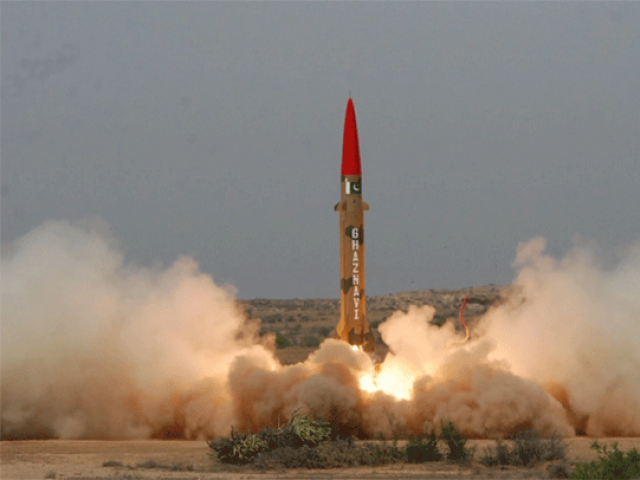
But first a word of praise and gratitude to the unsung heroes that made this happen — our scientists, engineers and technicians of the nuclear establishment, political leaders, armed forces’ personnel and diplomats, due to whose dedicated and untiring efforts, Pakistan became a nuclear power and ensured its security for the future.
To fully appreciate the importance of this development, it is necessary to recall the first Indian nuclear test of 1974, which, typically of Indian deception, was called a ‘peaceful nuclear explosion’. This demonstration of India’s nuclear capability, supplanted its numerical conventional weapons superiority over Pakistan, heightening Pakistan’s security concerns.
Party celebration PML-N to celebrate Yaum-e-Takbeer
To aggravate these concerns, the international community, led by the US, instead of punishing the culprit of regional nuclear proliferation, targeted the victim, threatening Pakistan with dire consequences if it tried to respond. Not only was assistance for our peaceful civilian nuclear programme cut off but international agreements such as with France for a reprocessing plant were derailed. Instead of supporting Pakistan’s search for security through international arrangements, the US applied wide-ranging sanctions through the Symington, Solar and Glenn amendments.
Fortunately, the Soviet invasion of Afghanistan provided the strategic space that Pakistan needed to proceed with its nuclear programme despite its limited national means. By 1984, it acquired the full nuclear fuel cycle and could have carried out a nuclear test but decided to maintain a ‘recessed’ nuclear deterrence through an untested ‘bomb in the basement’. Even so, once the Soviets withdrew from Afghanistan in 1990, the US imposed sanctions under the Pressler amendment, even though Pakistan had neither tested nor acquired weapons-grade fissile material.
Once the Vajpayee-led BJP government came to power, India resumed preparations for more nuclear tests, prompting Pakistan to convey its concerns to the US and other P-5 countries. It fell on deaf ears in Washington, which was preoccupied with promoting relations with India. Indian nuclear tests on 11 and 13 May 1998, therefore, caught the US totally by surprise. But, once again, the focus shifted to Pakistan with President Clinton warning Pakistan “not to follow suit.” While Washington offered vague assurances of support, these could not address Pakistan’s genuine security concerns which required the demonstration of a credible nuclear deterrent.
US treats Pakistan well when expedient, ditches us later: Musharraf
Moreover, it was our assessment, which proved to be correct, that overtime the larger US interest in allying with India against China would overcome their opposition to the Indian nuclear tests. Hence, our fateful decision to conduct our own tests and establish credible nuclear deterrence against India.
These developments brought about a qualitative change in the strategic deterrence that had operated between Pakistan and India. In the years prior to the acquisition of Pakistan’s recessed nuclear capability by 1984, conventional deterrence was inherently unstable and repeatedly broke down as demonstrated by the wars of 1965 and 1971. But even the possession of a potential nuclear-weapons capability by Pakistan changed the dynamics of deterrence, given the much greater destructive capacity of nuclear weapons.
The resulting tensions arising from India’s Brass-Tacks military exercises of 1987 or the confrontation following the Kashmir uprising against India in 1990 did not lead to conflict. After the 1998 tests, this nuclear deterrence became overt, preventing outbreak of war during the 1999 Kargil crisis and the Indian mobilisation in 2001 following the attack on the Indian parliament. The underlying reason was the existence of nuclear deterrence that neutralised India’s numerical superiority in conventional weapons and threatened mutually assured destruction.
This deterrence was relatively stable from 1998 till 2006, when the two countries agreed on several Confidence-Building Measures.
However, the growing rivalry between a declining US and a rising China, revived Washington’s relations with New Delhi, leading to a strategic alliance to contain China. Nuclear sanctions against India were replaced by an American waiver for civilian nuclear cooperation in 2006, which was extended, with the US pressure, by the Nuclear Suppliers Group, enhancing India’s capability to increase production of nuclear weapons.
This partnership also enabled India to access American weapons and technologies for its ambitious conventional and strategic military build-up, including short, medium, long range and submarine-launched ballistic missiles as well as development of a Ballistic Missile Defence System apart from reportedly developing thermo-nuclear weapons. There have also been irresponsible claims of calling “Pakistan’s nuclear bluff” and launching a “disarming splendid first or preemptive strike” on Pakistan. The most dangerous outcome for Pakistan is Indian pursuit of its Cold Start or Proactive doctrine, envisaging a limited conventional attack despite existence of nuclear deterrence.
This Indian attempt to find space for a conventional attack below the nuclear threshold in order to restore the salience of their conventional weapons numerical superiority, forced Pakistan to pursue its Full Spectrum Deterrence strategy with the development of low-yield nuclear weapons mated to short-range missiles to deter a conventional Indian attack. This has ensured deterrence across the entire spectrum of threat — whether conventional or nuclear, thereby stabilising mutual deterrence.
But while the US has encouraged India’s build-up, it has continued with its discriminatory policy by asking unilateral restraint from Pakistan. In retrospect it is, therefore, obvious that had Pakistan succumbed to American pressure not to test or to roll back its nuclear capability, our fate could have been that of Iraq or Libya or presently against Iran. Even now Americans retain contingency plans to take out Pakistan’s nuclear weapons on the spurious argument that these could fall into the hands of terrorists. It is due to Pakistan’s stringent nuclear safety and security measures that prevent them or others from doing so.
Published in The Express Tribune, May 28th, 2018.
Like Opinion & Editorial on Facebook, follow @ETOpEd on Twitter to receive all updates on all our daily pieces.
1718870162-0/BeFunky-collage-(60)1718870162-0-405x300.webp)
1730504285-0/Martha-(1)1730504285-0-165x106.webp)











COMMENTS (1)
Comments are moderated and generally will be posted if they are on-topic and not abusive.
For more information, please see our Comments FAQ